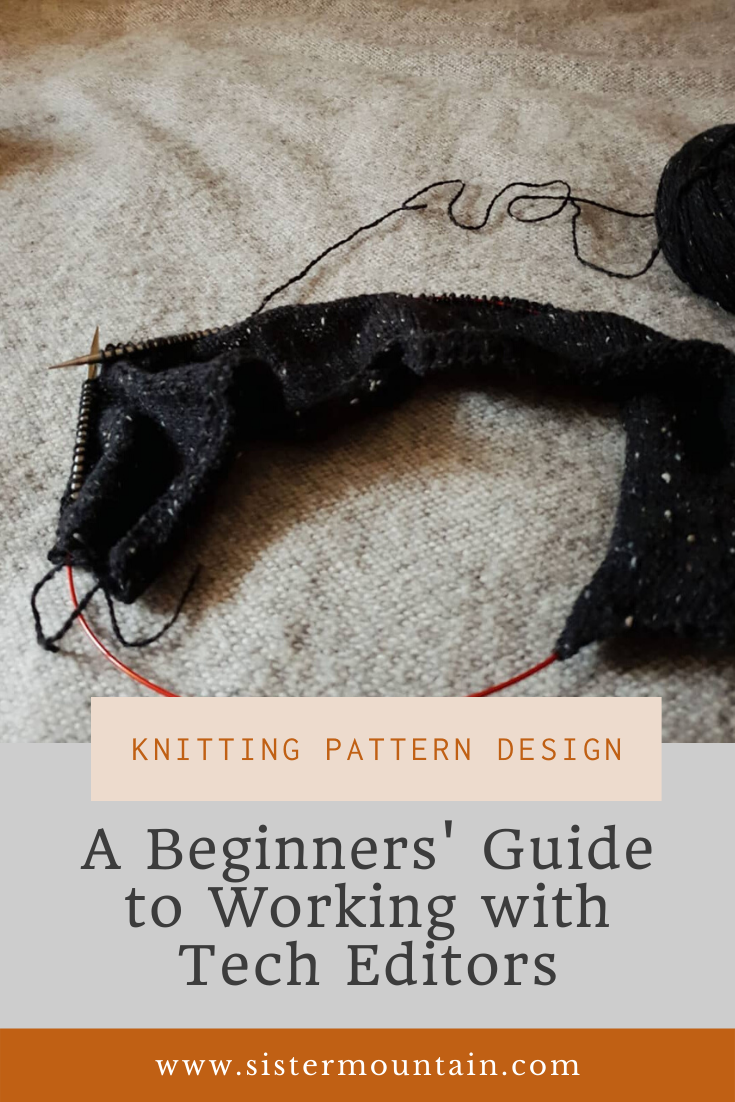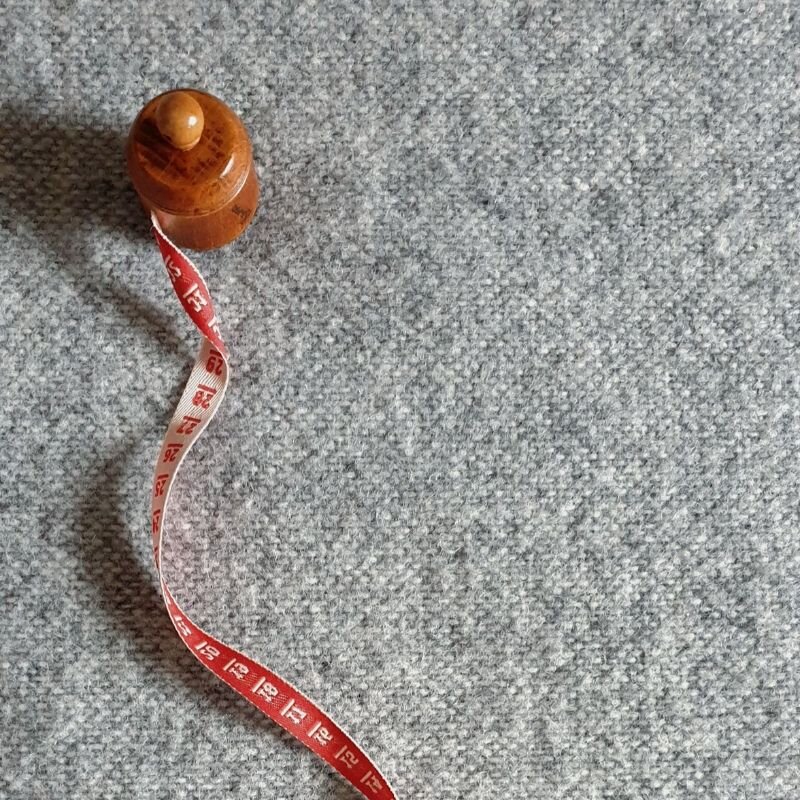A Beginner’s Guide to Working with Tech Editors
Before I started designing knitting patterns, I had no idea what a tech editor is. I heard the words thrown around occasionally, but it felt like insider language that only knitting pattern designers understood.
Once I found out what their role in the design process was, I still wasn’t sure how important they were to the process. Wouldn’t my test knitters find the errors? Couldn’t I just tech edit it myself?
If you relate to any of this, this blog post will bring you some clarity. I’ll be answering your questions on what a tech editor actually does, how important they really are (spoiler alert: VERY!) and where to find one, along with lots more helpful information on working with tech editors.
What does a tech editor do?
The role of a tech editor is to ensure that your patterns are as correct, concise and easy-to-use as possible. A tech editor will not alter or re-write any of your pattern. As the designer, it is your job to make changes to the pattern based on their comments.
Tech editors don’t always just check the maths. Each tech editor is different so make sure you ask them what the scope of their services are. They might proof-read, check the clarity of the instructions, check the sizing and ensure that your pattern is meeting the pattern guidelines as set in your style guide (a document that ensures consistency throughout your pattern). Some tech editors even grade patterns for you!
When the tech editor has checked the pattern, they will let you know about any errors or inconsistencies that they’ve found in your pattern. I’ll be honest - it can be very humbling! Your tech editor will have corrections for you and sometimes, lots of them! Don’t take it personally. They are doing exactly the job you paid them for. Using their comments, you can correct and clarify to create the best possible version of your pattern.
How critical are tech editors if you are just self-publishing it on Ravelry?
Many new or aspiring knitting pattern designers don’t think that you need a tech editor when you are just self-publishing a pattern. This is a big misconception and one that could potentially harm your reputation as an independent knitting pattern designer.
If you start out by self-publishing badly written patterns with lots of errors, makers will stop buying them. Even if you eventually start using a tech editor and your patterns improve, many makers will avoid them, remembering their negative experiences with your previous patterns.
Additionally, badly written patterns will require a huge amount of pattern support from you. This will continue to take up large chunks of time (and time is money!) as you assist each maker. Doing tech editing will drastically reduce your time spent on pattern support.
Don’t be tempted to skip this part of the process - working with a tech editor will help you to spot areas where you continuously make mistakes and ultimately, teach you to be a better designer over time.
Can my test knitters tech edit my knitting pattern?
Test knitters can (and should) never do the job of tech editors. Very few test knitters will read every word written in the pattern, so they are unlikely to spot all of the inconsistencies.
A test knitters role is to test the user experience of working from the pattern, quite often on a voluntary basis. Most of the time, they offer to test knit because they are excited to get early access to the pattern, free of charge. Their job is to give feedback on their experience knitting the pattern. It is unfair to expect them to deal with major errors.
If you have to choose between tech editing and test knitting, I would say choose tech editing EVERY time!
Can you tech edit your own designs?
You should never attempt to tech edit your own patterns. Even tech editors who design don’t do that! You are too close to the pattern and won’t spot all of the errors or clarity issues. It is worth getting a second pair of eyes on it.
How to Find a Good Tech Editor
There is an extensive directory of tech editors in the Budding Designers group on Ravelry, which is a good place to start. Additionally, you can also google tech editors and check our their websites. Sometimes, they will provide testimonials from designers they have worked with which can be helpful.
One of my test knitters actually became the tech editor I use for self-published designs, so you may even know existing tech editors in your community. Don’t be afraid to ask around!
Also, if you know any knitting pattern designers, you could ask them who they use. I’m sure that most would be happy to tell you who they use.
You can also look at pattern pages of designers whose patterns you enjoy working from - some designers will reference their tech editor in the listing.
When should you tech edit your pattern?
I send the first draft of my pattern and schematic to my tech editor as soon as I have completed the sample. Sometimes, when I am working with a publication, they will send the pattern to tech-editing before I sample knit it.
If you are self-publishing and you haven’t worked with this tech editor before, send them a copy of your style guide. If you don’t have a style guide (i.e. guidelines on how you consistently write your patterns), it’s time to make one! This is something I wish I’d done sooner. Some tech editors even help with setting this up.
I always used to do test knitting before tech editing, but now, I find that tech editing is more valuable ahead of the test knitting phase. It ensures that your test knitters get to work from a pattern that is closer to the final draft and frankly, I don’t like the idea of expecting my test knitters to find all of my mistakes when I’m not paying them. It’s not fair.
How much does a tech editor cost?
Hourly rates will vary a lot from one tech editor to another. The best thing to do is to approach them directly to find out how much their services cost.
I did a bit of pricing research prior to writing this blog post and found that, in a group of 12 tech editors found via Google, the hourly rates ranged from $25-40 per hour with an average being $34 per hour. I pay my tech editor €30 per hour which is approximately $33 - almost dead on average!
Paying for tech editing is really nerve-racking for new designers because the reality is that, sometimes, you may not even cover your costs in pattern sales. That happened with one of my early patterns. As you gain popularity and experience, this won’t be a problem. And of course, charging a fair price on your patterns will help with that too.
I recommend that you use the best tech editor you can afford. A more experienced tech editor will have a higher hourly rate, however, they are likely to work much faster than a less experienced one. This could actually end up being more affordable in the long run. However, if you’re just starting out and money is tight, just do the best you can.
How long does it take a tech editor to edit a pattern?
It is very challenging for a tech editor to estimate how much time your pattern will take to tech edit without taking a good look at it.
The time taken for tech editing will vary a lot, depending on the pattern. More complex garment patterns will require a lot more tech editing time than a very simple accessory. The more time spent tech editing, the more money you will spend on tech editing.
Most of my garment patterns have taken around 2 hours to tech edit. However, I once had to write and tech edit a particularly complicated pattern before I was allowed by the publication to sample knit it and it took 5 hours to tech edit! As you can imagine, that was a pretty soul-destroying tech editing experience…! Thankfully, the tech editor was truly fantastic and really helped me to turn it into a beautiful finished pattern.
I hope this article has helped to shed a little more light on what it’s like working with tech editors. It is such an important part of the knitting pattern design process and should never be underestimated.
Discussion
What are your big questions on tech editing? If there’s something that I haven’t covered that you would love to learn more about, let me know and I will add it to my list of things to cover on the blog.



